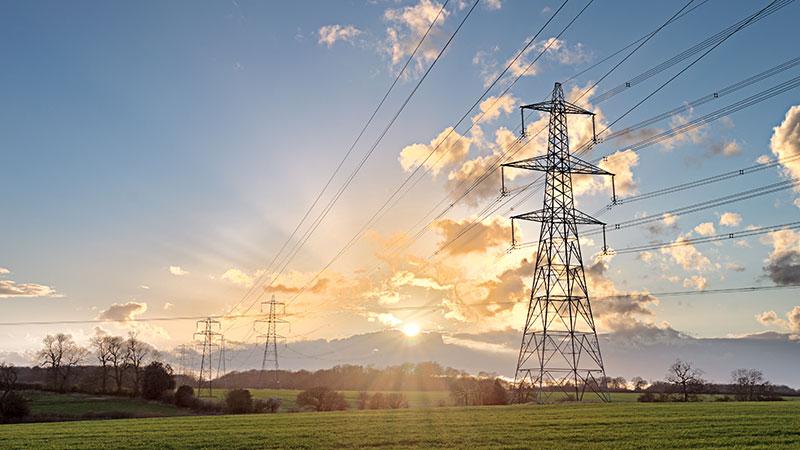Online Transformer Condition Monitoring Can Cut Revenue Lost Due to Downtime by Over 80% for Power Producers
Leading industrial measurement provider highlights the benefit of online oil monitoring to cut the cost of revenues lost during transformer maintenance downtime.
Vaisala, a global leader in environmental and industrial measurement, has outlined the potential for operators of generation step-up (GSU) transformers to cut revenues lost due to transformer failure by more than 80% using online monitoring of transformer oil.
Whereas traditional offline sampling methods for monitoring oil only give a snapshot of transformer health, online monitoring allows asset owners to monitor the health trend of a transformer based on multiple indicators. By taking measurements on an hourly basis continuous online monitoring allows owners to identify definitely when conditions in their asset are changing. Armed with this information, asset managers can spot potential failures long before they become serious, and ensure maintenance plan and carry out life-extending repair and replacements during time windows that suit the demands of power production and supply.
For intermittent power producers, including those working in the wind and solar industries, the opportunity to forecast transformer failure and make repairs and replacements during periods when no energy is being produced is hugely valuable. While the cost of inspection visits are fixed at low value including technician and laboratory time, revenue losses during downtime can vary, and be significant, depending on the duration of the shutdown, the availability of resource for wind and solar producers, and the corresponding wholesale price of electricity at the time.
Delays in responding to evolving faults, whether caused by the failure to diagnose the problem because of the sampling methodology used, or because of concerns about interrupting the supply of power, can allow small problems to develop into potentially catastrophic failures. Unless failures are caught early and dealt with appropriately, asset managers risk having faults develop rapidly and unpredictably into catastrophic failures, which can require the expensive repair or replacement of a transformer costing millions of dollars.
The most common evolving faults that lead to catastrophic failure are aging and deteriorating insulation, and the results of improper maintenance and repair. The real-time measurements taken by online monitoring make it easy to recognize these faults earlier in their lifecycle and plan interventions to mitigate their effects on transformer performance.
Early warnings of changes in the health of transformer oil allow maintenance teams to properly plan repairs, that can significantly reduce the amount of time a transformer needs to be offline while work is done. Study by Vaisala has shown that the use of online monitoring to lower the probability of failure among generations step-up transformers can reduce foregone revenue from energy not generated due to GSU failure by more than 80%, assuming the unit costs of maintenance, repair and energy are equal across comparable transformers.
The costs of a failed transformer can add up rapidly, including the costs of repair and replacement. Online monitoring cannot reduce the capital cost of a replacement transformer, though it can change the timing. Similarly, online monitoring can reduce the cost of repair by helping maintenance teams to plan repairs more efficiently and through better preparation reduce the time and resources required for repairs.
Equally, lost revenues can rise quickly, as the power producer has to purchase the lost power from somewhere. The biggest influence on these costs is the length of time the transformer may be unavailable during its repair. Online monitoring reduces this period by making it easier to plan and carry out repairs, thus making them more efficient, and cutting the likelihood of faults developing into failure in the first place.
With failure rates close to 1% for GSUs transformers, outage and downtime that limits the production of power can pose a serious risk to the revenues of renewable energy power producers. Typical GSU transformer failures include dielectric failures, i.e. those affecting insulation, electric, and mechanical failures, and account for majority of all failures in these types of transformers.
The extent of the possible savings through online monitoring: the reduction in failure rates, leading to reduced repair and replacement costs; the advanced warning of changes in transformer health leading to better planned and more efficient inspection and maintenance regimes; the reduction in foregone revenues, means payback periods on investment in online monitoring equipment can be short. For owners and operators investing in online monitoring, payback periods can be less than two years.
Please visit us at Cigre, the leading event for Power Systems Experts, taking place in Paris, August 27–31, stand #258. Download eGuide to learn more: /en/ebook/download-power-transformers-ebook
More information for media:
Miia Lahti
Communications Manager, Industrial Measurements, Vaisala
Tel. +358 50 555 4420, [email protected]
Vaisala is a global leader in environmental and industrial measurement. Building on 80 years of experience, Vaisala provides observations for a better world. We are a reliable partner for customers around the world, offering a comprehensive range of innovative observation and measurement products and services. Headquartered in Finland, Vaisala employs approximately 1,600 professionals worldwide and is listed on the Nasdaq Helsinki stock exchange. www.vaisala.com www.twitter.com/VaisalaGroup.
For power generation and transmission industry, Vaisala provides unique measurement equipment for online monitoring of transformer insulation oil. Our reliable solutions support in planning and optimizing the preventive maintenance of power transformers, and thus help to extend their lifetime and reduce the risk of unexpected and costly outages.
